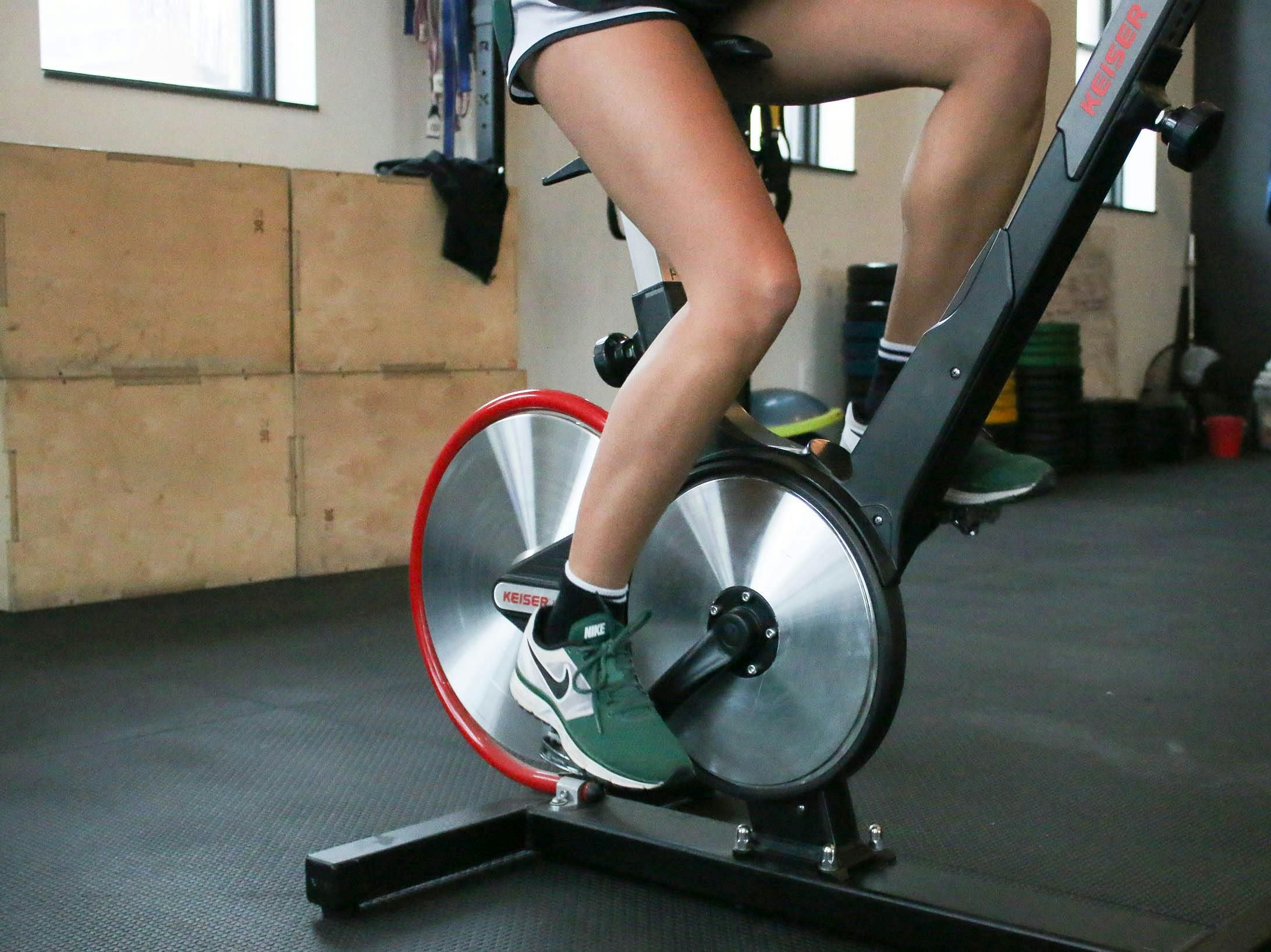Stationary bikes are a staple in many fitness regimens. There are no shortages of health benefits to this type of exercise. They offer a low impact, yet effective way to improve cardiovascular health and tone muscles. Let’s find out what muscles a stationary bike works to the impact this equipment has on your overall health.

But what muscles does a stationary bike work? The answer might surprise you. It’s not just your legs that get a workout.
Stationary bike workouts engage multiple muscle groups. The primary muscles worked include quadriceps, hamstrings, calves, and glutes. Secondary muscles involved are the core and lower back for stability.
In this article, we’ll delve deeper into the specific muscle groups targeted by stationary bike workouts. We’ll also compare these workouts to other forms of exercise like spin classes and indoor cycling.
Whether you’re a fitness enthusiast or just starting your fitness journey, this guide will provide a comprehensive understanding of the effects of stationary bike workouts on your body.
So, let’s get started. Discover what muscles a stationary bike works and pedal our way to better health and fitness.
The Primary Muscle Groups Targeted by Stationary Bike Workouts
When you pedal on a stationary bike, you’re engaging several muscle groups. The primary muscles targeted are in your lower body.

The quadriceps, located at the front of your thighs, do most of the work. They contract when you push down on the pedals. This action helps to strengthen and tone these muscles.
The hamstrings, at the back of your thighs, also play a crucial role. They engage when you pull the pedals up. Regular cycling can lead to stronger, more defined hamstrings.
Your calves and glutes are also worked during a stationary bike workout. Here’s a breakdown of the primary muscles targeted:
- Quadriceps: These muscles are engaged when you push down on the pedals.
- Hamstrings: These muscles work when you pull the pedals up.
- Calves: These muscles help with the up and down motion of pedaling.
- Glutes: These muscles are engaged when you push down on the pedals and when you’re riding out of the saddle.
By understanding which muscles are targeted, you can focus on proper form and get the most out of your workout.
The Secondary Benefits: Core Stability and Posture
While the lower body muscles are the primary focus, stationary bike workouts also engage your core. This includes your abs, obliques, and lower back muscles.
Maintaining a stable position on the bike requires a strong core. This helps to improve your balance and stability, both on and off the bike.
In addition, proper cycling posture can help strengthen your lower back. This is beneficial for those who spend long hours sitting or have a sedentary lifestyle.
In conclusion, stationary bike workouts offer more than just lower body strength. They also contribute to core stability and improved posture, making them a well-rounded exercise option.
Comparing Stationary Bike Workouts to Spin Classes and Indoor Cycling
Stationary bike workouts, spin classes, and indoor cycling all offer unique benefits. They all engage the same muscle groups, but the intensity and environment can vary.
Spin classes are high-energy group workouts. They often incorporate music and dynamic lighting, creating a motivating atmosphere. This can make the workout more enjoyable and help you push your limits.
Indoor cycling, on the other hand, can be done at your own pace. It’s a great option for those who prefer a more relaxed, self-guided workout. You can adjust the resistance and speed to suit your fitness level and goals.
In conclusion, whether you choose stationary bike workouts, spin classes, or indoor cycling, you’re sure to get a great workout. The best choice depends on your personal preferences and fitness goals.
“
Cardiovascular Benefits of Stationary Biking
Stationary biking is a fantastic way to boost your cardiovascular health. Regular workouts can help improve heart function, lower blood pressure, and increase lung capacity.
This form of exercise is also effective in managing or preventing diabetes. It helps regulate blood sugar levels by increasing your body’s insulin sensitivity.
In addition, stationary biking can improve your sleep quality. Regular cardiovascular exercise promotes deeper, more restful sleep, which is essential for overall health and well-being.
How Stationary Bike Workouts Aid in Weight Loss and Fat Burning
Stationary bike workouts can be a powerful tool for weight loss. Regular sessions can burn a significant number of calories, aiding in creating a calorie deficit.
The intensity of your workout can be easily adjusted on a stationary bike. Higher resistance levels and interval training can boost your metabolism, leading to increased fat burning.
Moreover, consistent stationary bike workouts can lead to improved muscle tone and strength. As muscle tissue burns more calories than fat tissue, increasing your muscle mass can help you burn more calories, even at rest.
The Low-Impact Nature of Stationary Biking: A Boon for Joint Health
Stationary biking is a low-impact exercise, making it a suitable option for individuals with joint issues. Unlike running or certain types of aerobic exercises, stationary biking puts less stress on your knees, hips, and ankles.
This makes stationary bike workouts a safer alternative for those with joint concerns or those recovering from injuries. It’s also a great option for older adults looking to stay active without risking joint health.
Moreover, regular indoor cycling can improve joint mobility and flexibility. This can contribute to better overall joint health and reduce the risk of future injuries.
Tailoring Your Workout: Adjusting Resistance and Position for Maximum Effect
One of the advantages of stationary bike workouts is the ability to adjust resistance levels. This allows you to increase the intensity of your workout as your fitness level improves. It also enables you to target different muscle groups more effectively.
Proper seat and handlebar adjustment are also crucial for an effective and safe workout. The right positioning can help you engage the correct muscles and avoid unnecessary strain.
Remember, stationary bike workouts can be tailored to individual fitness goals. Whether you’re aiming for weight loss, muscle toning, or improved endurance, you can adjust your workout accordingly.
The Mental Health Advantages of Regular Indoor Cycling
Indoor cycling isn’t just beneficial for your physical health. It can also have a positive impact on your mental well-being. Regular workouts can help reduce stress and improve mood.
Moreover, focusing on rhythm and breathing during your workout can have a meditative effect. This can further enhance mental health, promoting a sense of calm and well-being.
Conclusion: Integrating Stationary Bike Workouts into Your Fitness Regimen
Incorporating stationary bike workouts into your fitness routine can offer numerous benefits. From targeting multiple muscle groups to improving cardiovascular health, these workouts are versatile and effective.
Whether you’re a fitness enthusiast or a beginner, stationary biking can be tailored to your fitness level and goals. It’s a convenient and low-impact exercise that can be done at home or in a gym.
Stationary bike workouts are a valuable addition to any fitness regimen. They offer a balanced workout that can help improve both your physical and mental health.



